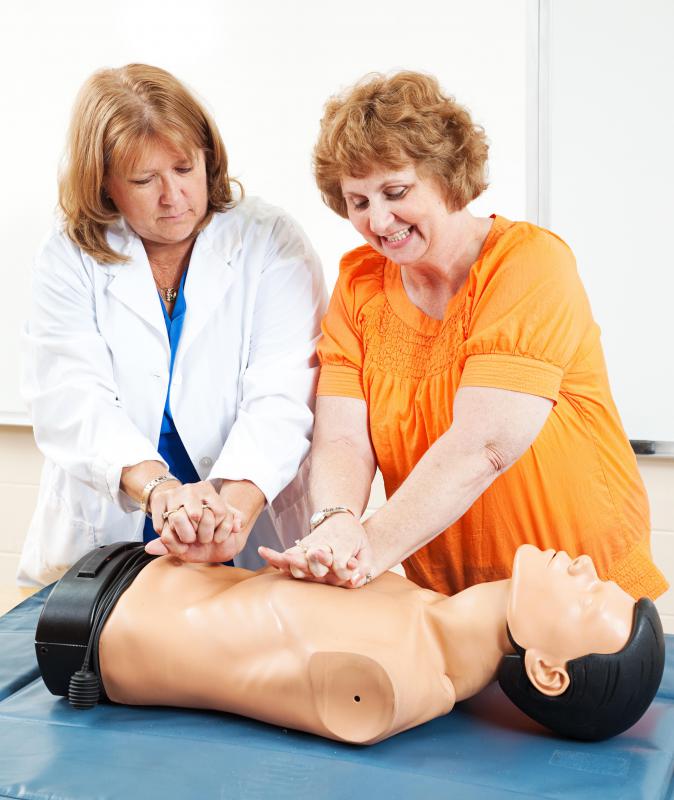At WiseGEEK, we're committed to delivering accurate, trustworthy information. Our expert-authored content is rigorously fact-checked and sourced from credible authorities. Discover how we uphold the highest standards in providing you with reliable knowledge.
What is Hands Only CPR?
Hands only CPR or hands only cardiopulmonary resuscitation is gaining ground as a very acceptable alternative to performing chest compressions and mouth-to-mouth resuscitation for people who have had a sudden heart attack. Studies published in the journal Circulation in March 2008, suggest that bystanders are more likely to perform hands only CPR because it eliminates the mouth breathing component. Presently, only about 33% of people who collapse due to a sudden heart attack actually receive true CPR, possibly because people are untrained, and also because bystanders are unwilling to try. Conversely, hands only CPR seems a much easier method, requires far less training and is more likely to be performed by someone with minimal training.
Instead of having a breathing component, hands only CPR focuses on chest compressions only to help heart beat. It is still appropriate to get training for this, but it is easier to learn. You can watch some online videos that demonstrate the technique, which involves giving about 100 chest compressions per minute. However, if you are in a true emergency where sudden heart attack is suspected, a 911 operator can frequently guide you through the procedure.

Not all circumstances or people are helped by hands only CPR. Children should receive the more traditional CPR, and drowning victims require mouth-to-mouth resuscitation. Generally the hands only approach is best if sudden cardiac arrest has occurred. Also, if you are trained in both methods, adults are equally likely to be helped by standard CPR, but only if you are very confident that you know how to apply it. If you have any doubts, hands only CPR is a very acceptable alternative that appears to work as well as standard CPR in cases of sudden heart attack.
More importantly, due to the elimination of the mouth-to-mouth component, this newer form of CPR may actually be used with greater frequency. People seem much less squeamish or uncomfortable performing chest compressions only, especially on strangers. When a heart attack occurs and the heart stops beating, risk of total brain death increases at a rate of about 10% per minute. A heart that is not beating deprives the brain of vital oxygen. Chances of survival greatly increase when the heart is beating again, something that can be accomplished through CPR.
It’s therefore imperative to initiate hands only or true CPR within a few seconds of someone collapsing. Allowing a great deal of time to elapse can greatly reduce survival chances. Organizations like the American Heart Association encourage people to get training in, at minimum, the hands only form of CPR so more people can be helped if they have a sudden heart attack.
AS FEATURED ON:
AS FEATURED ON:











Discussion Comments
Mum had a heart attack in the shower last year. I performed hands-only CPR until the ambulance arrived. They had to use the AED. I watched them give her vigorous CPR for about 15 minutes, then her pulse finally returned.
Post your comments